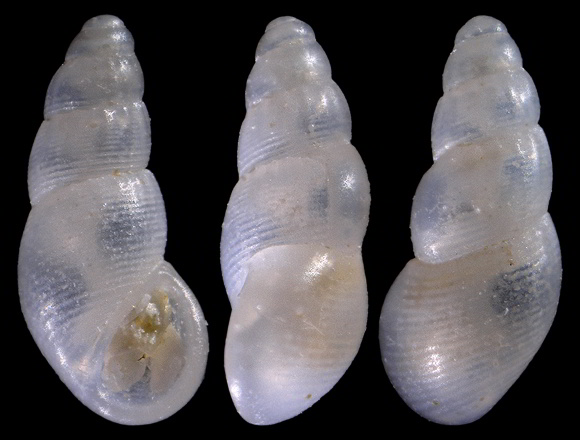
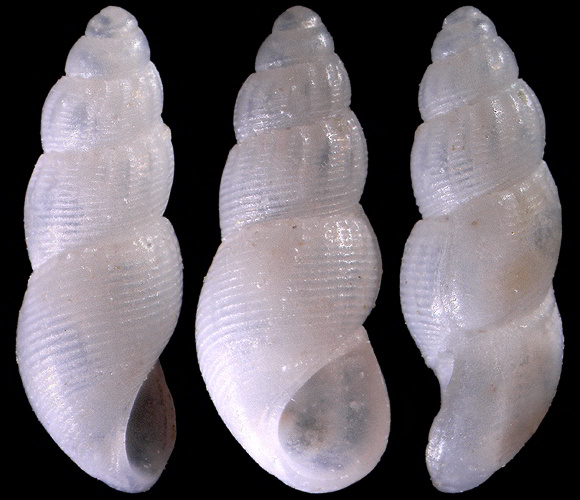
Shell « ovate-conic, relatively thick, from white to yellowish, of 5-5.5 moderately flattened whorls divided by deep submerged sutures. There is a more or less marked flattening on the upper part of each whorl. The sculpture of the adult shell consists of rare poorly developed axial ribs strongly marked on the upper whorls and on the subsuture area of the last whorl. The spiral striation consists of frequent, clearly visible ribs and poorly marked striation between them. The subsuture area is covered only by spiral striation. There are 20-24 spiral ribs on the body whorl. The aperture is drop-shaped, with a blunt angle; the inner lip is straightened whereas outer is rounded. The umbilicus is poorly marked, covered by the inner lip. » – Nekhaev, Deart & Lubin: “Molluscs of the genus Onoba H. Adams et A. Adams, 1852 from the Barents Sea and adjacent waters”, Proceedings of the Zoological Institute RAS vol.318-3, Saint Petersburg 2014, p.269-270.
8m deep, Port d’Alon. 2,8mm.
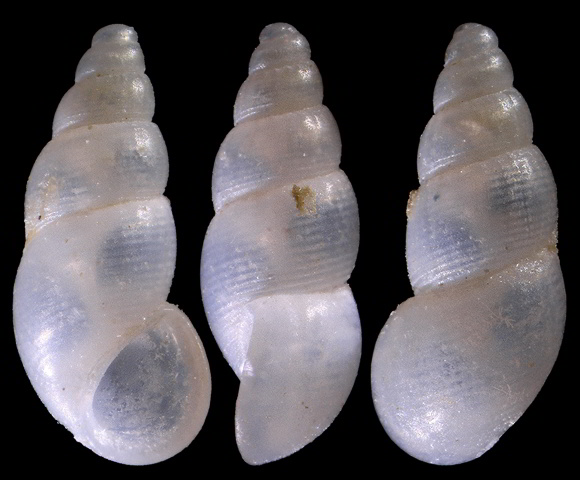
« Turbo with a short, conic, white shell, obtusely pointed. Volutions four or five, rounded, well defined by the separating line, and wrought with faint ribs, and fine obsolete transverse striae on the body whirl, both of which are inconspicuous on the superior spires; the ribs do not extend to the lower part even of the body, where the spiral tranverse striae become most conspicuous. Aperture suborbicular; pillar lip a little reflexed, columella smooth. » – G. Montagu: Testacea brittanica vol. II, London 1803, p.326.
Intertidal grit, on slope, Lanvéoc, Crozon Peninsula, Finistère, W. Brittany, NW. France. 2,9mm.
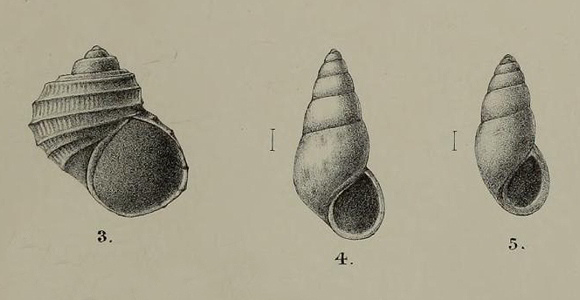
Above: Rissoa scotiana in Melvill & Standen: “The marine Mollusca of the Scottish National Antarctic Expedition”, Transactions of the Royal Society of Edinburgh vol. XLVI (1), fig.5 of the plate. « With a superficial resemblance to Rissoa (Onoba) striata Mont., a well-known European species, this little shell seems, likewise, akin to R. (Ceratia) turqueti E. Lamy, recently described from Wandel Island, from which it differs in possessing one whorl more, in being not in the least degree rimate, in the thickened continuous peristome, and the obscure spiral straw-coloured zone encircling the body-whorl. Perhaps, in time to come, additional links to bind these two species together may be found. » – Melvill & Standen, p.133. Nota bene that Rissoa striata is an invalid name for semicostata.
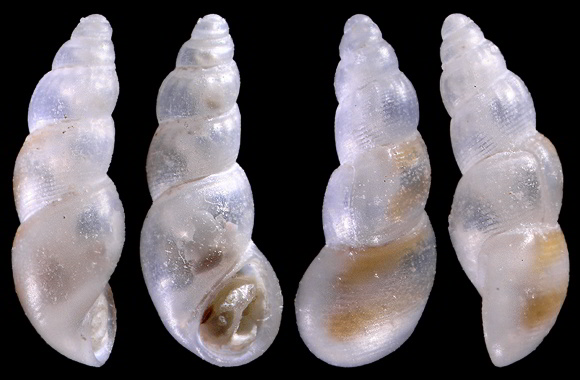
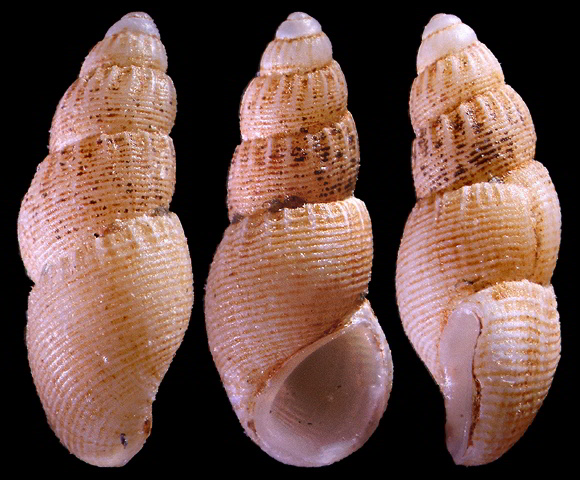
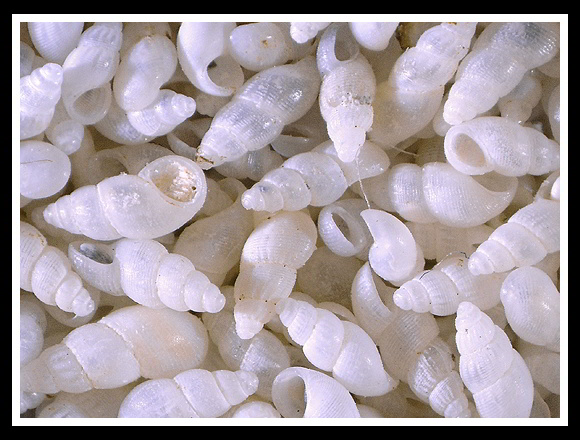
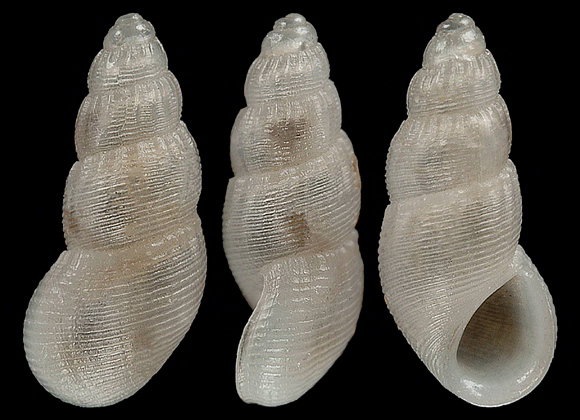
Original picture provided by A. Nappo (IT).
– (CC BY-NC-SA) –